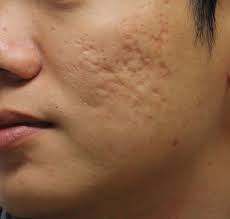 Some people call it a pimple while others describe it as active acne but no matter what it’s called, it’s a common skin problem of us all. Frequently, pimples are caused by bacteria that infect the sebum and clog the pore, thus causing inflammation – redness. The problem usually begins when the skin does not get the right care it needs like proper cleansing, toning and moisturizing.
Some people call it a pimple while others describe it as active acne but no matter what it’s called, it’s a common skin problem of us all. Frequently, pimples are caused by bacteria that infect the sebum and clog the pore, thus causing inflammation – redness. The problem usually begins when the skin does not get the right care it needs like proper cleansing, toning and moisturizing.
It is quite common among teenagers whose entering puberty wherein their body develops and their hormones changes. It is also common for people who are usually exposed to polluted and congested environment.
There are several reasons on how we can get a pimple likewise there are also several types of acne. By knowing the different types of pimples, we can also determine the appropriate treatment that’s needed. Let us have a look at them:
1. Comedones:
Blackheads and whiteheads are also known as comedones. Blackheads are open comedones – follicles with a wider opening and have plug of sebum that is black in color. Whiteheads on the other hand are closed comedones – follicles filled with the same plugs of sebum but with a white and small opening.
2. Papules & Pustules:
Do you get red bumps, which are little raised on the skin but do not have any fluid or pus? If you do, then these are called papules. If there are red pimples with pus or infected fluid, then those are called pustules.
3. Nodules
These nodules are one of the most painful, irritated and inflamed acne lesions that spread on the skin. These are red hard lumps, which are not only large, but painful as well. Nodules are formed when the wall of the hair follicle is torn; oil & cell debris enters into dermis. When a nodule heals, it usually leaves an acne scar.
4. Cystic Acne
Cystic acne and nodules look similar, but the former ones are internally a serious problem. The presence of cysts in the pimple makes it further infected, which leads to serious acne issues.
Now that we know the types of acnes, we can now determine the required acne treatments such as:
• For comedones (blackheads & whiteheads) and papules, avoid scrubbing your face during cleansing and avoid oil based makeup that will clog the pores. It is also necessary to use mild skin care products that gently cleanse the skin and resist the spread of bacteria. Products such as glotherapeutics Clear Acne Cleanser, Clear Refining Mask, Daily Polishing Cleanser, & Glycolic Cleanser are clinically approved in treating different acnes and are even recommended by several doctors. glotherapeutics’ products are US FDA approved that have incorporated the most researched, medically proven ingredients to combat, prevent and heal breakouts.
• For nodules and cystic acne, acne treatments such as VI Peel can help to effectively remove acne and reduce acne scars. VI Peel is a chemical peel treatment that is painless but delivers effective results. Microdermabrasion on the other hand is an exfoliation treatment that can reduce acne and can also help extract comedones.
• Another factor that can help to reduce acne is having a proper beauty sleep. Sleeping at least 7 hours a day is important to have a clear and refreshed skin.
• And also drinking plenty of water at least 8 glasses a day will keep our skin hydrated.
- If you would like to be an informed patient, please contact us at +65-6801-4000 or
hello@cutislaserclinics.com. - Cutis Medical Laser Clinics, 9 Scotts Road Pacific Plaza, Scotts Medical Center #08-07, Singapore – 228210
+65-6801-4000 - hello@cutislaserclinics.com
